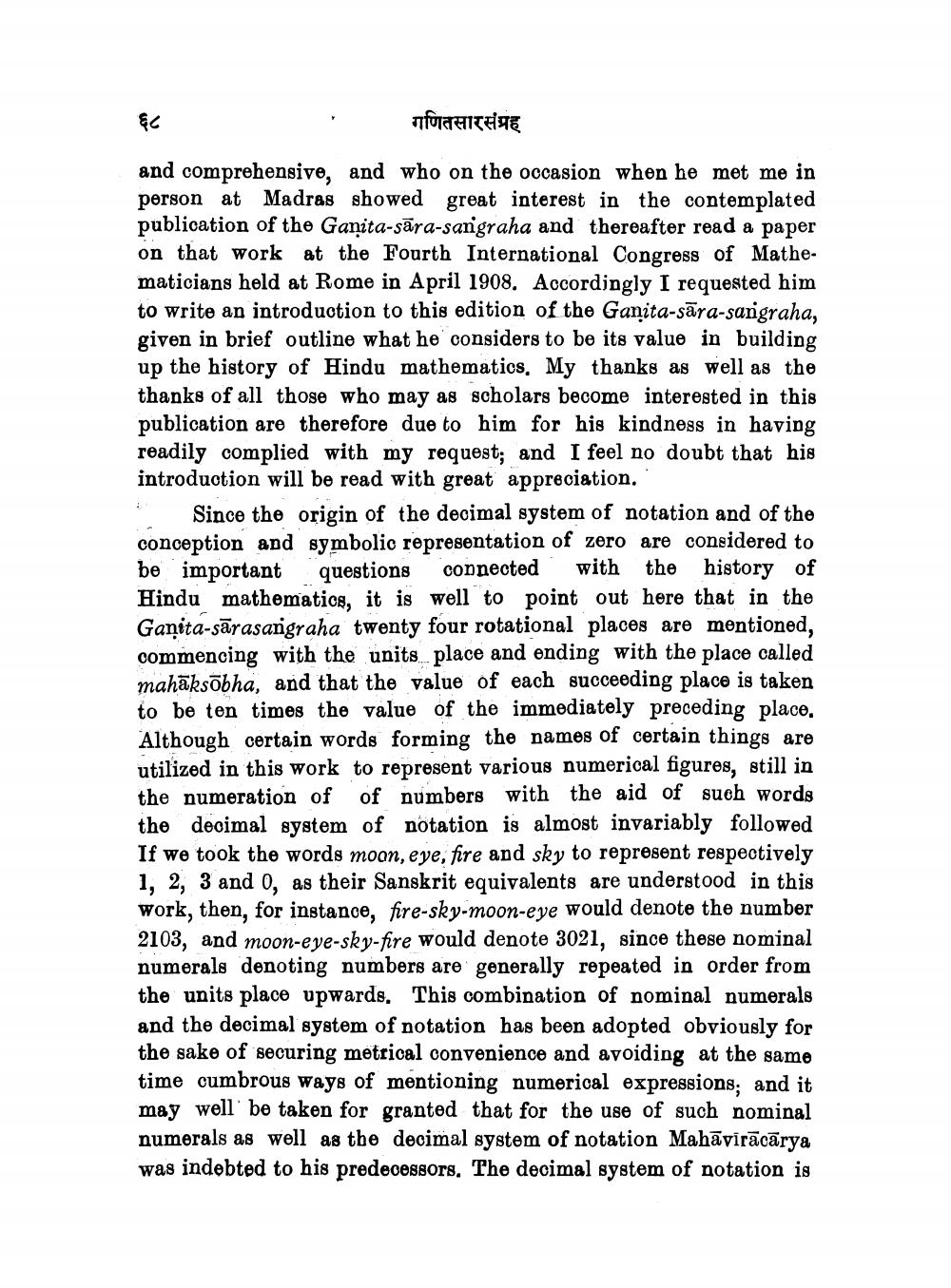________________
६८
गणितसारसंग्रह
and comprehensive, and who on the occasion when he met me in person at Madras showed great interest in the contemplated publication of the Ganita-sara-sangraha and thereafter read a paper on that work at the Fourth International Congress of Mathematicians held at Rome in April 1908. Accordingly I requested him to write an introduction to this edition of the Ganita-sara-sangraha, given in brief outline what he considers to be its value in building up the history of Hindu mathematics. My thanks as well as the thanks of all those who may as scholars become interested in this publication are therefore due to him for his kindness in having readily complied with my request; and I feel no doubt that his introduction will be read with great appreciation.
Since the origin of the decimal system of notation and of the conception and symbolic representation of zero are considered to be important questions connected with the history of Hindu mathematics, it is well to point out here that in the Ganita-sarasangraha twenty four rotational places are mentioned, commencing with the units place and ending with the place called mahaksōbha, and that the value of each succeeding place is taken to be ten times the value of the immediately preceding place. Although certain words forming the names of certain things are utilized in this work to represent various numerical figures, still in the numeration of of numbers with the aid of such words the decimal system of notation is almost invariably followed If we took the words moon, eye, fire and sky to represent respectively 1, 2, 3 and 0, as their Sanskrit equivalents are understood in this work, then, for instance, fire-sky-moon-eye would denote the number 2103, and moon-eye-sky-fire would denote 3021, since these nominal numerals denoting numbers are generally repeated in order from the units place upwards. This combination of nominal numerals and the decimal system of notation has been adopted obviously for the sake of securing metrical convenience and avoiding at the same time cumbrous ways of mentioning numerical expressions; and it may well be taken for granted that for the use of such nominal numerals as well as the decimal system of notation Mahaviracārya was indebted to his predecessors. The decimal system of notation is




